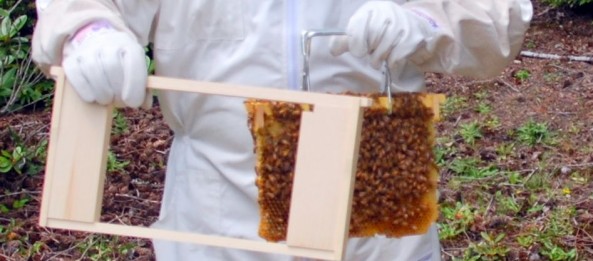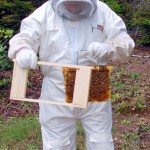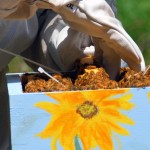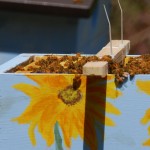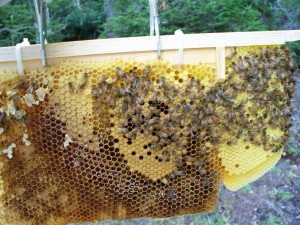Though there are many positive aspects to Abbé Émile Warré (1867-1951) beehive design, one of the drawbacks is the incompatibility between it and other hive systems. As I’m learning more and more about starting splits, queen rearing and using nucs in the classes offered by West Sound Beekeepers Association I’m seeing how much of a hassle it is to work between Warre and Langstroth hives.
In this particular case I wanted to start a split using several frames of brood and pollen and several frames of honey. Typically you would take these from one or more strong hives and just move the frames into a nuc, however the Warre bars are quite a bit shorter than the Langstroth nuc…so what to do….what to do?
One option is to build an adaptor. This will allow you to slide the smaller Warre bar with its comb into a frame that will then fit into a Langstroth nuc. Fortunately for me I have a friend/fellow beekeeper who is a master wood worker. Darren, House of Bees.com, built a slick frame that allows just that. You can see to the side what it looks like.
Another option is one I devised on the fly before Darren proposed his Warre adapter. Simply take the top bar of aLangstroth frame and
lay it along the top of the Warre bar. Run two zip ties through the comb and around cinching the two top bars together. Then simply hang the combination into your nuc or other Langstroth hive. As you can see in the photo the bees are more than happy to fill in the space.
The big difference between the two approaches is that Darrens adaptor can easily be undone if you wanted to move the Warre bar back into a Warre box. My zip tie method would be a little messier.

